Making a Western? Here's How to Max Out Your Locations and Find an Audience
Senior VP of Programming at INSP Films, Doug Butts, breaks down where, how, and why you should shoot a western on a budget.
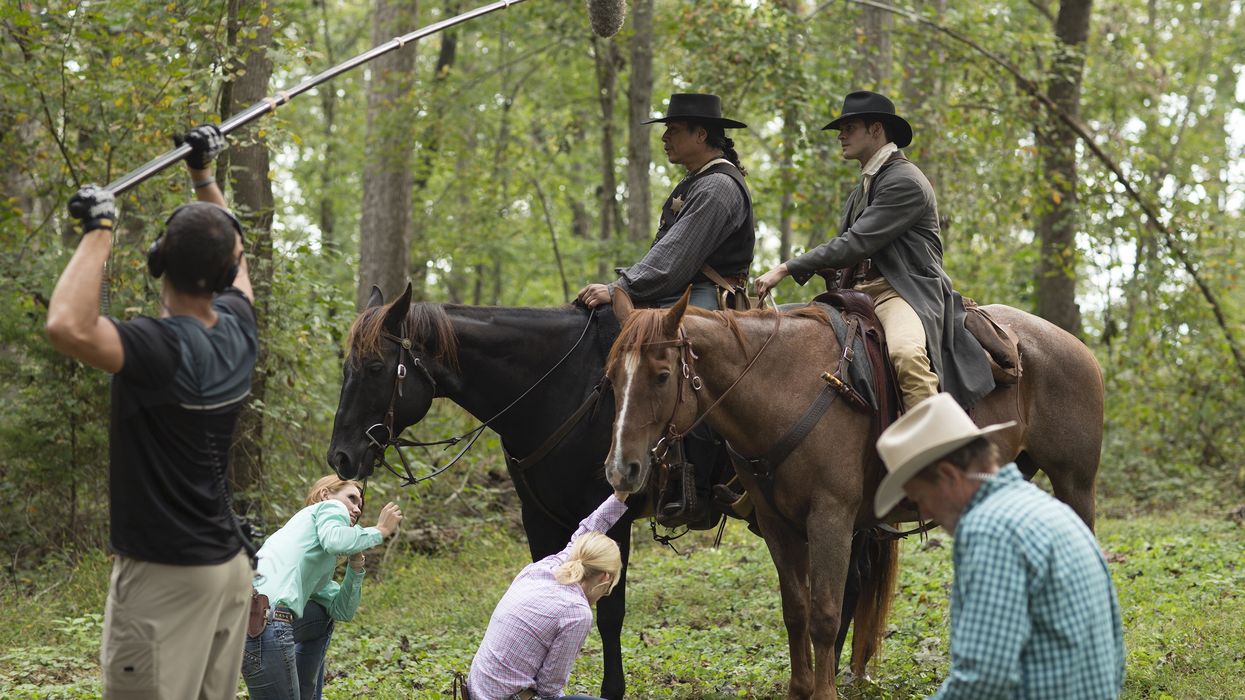
So, you want to make a western. First, you need to know your audience—and not every offering in the genre is going to draw the same crowds.
In the indie world, it’s often the revisionist takes on the western—think Kelly Reichardt’s First Cow and Chloé Zhao’s The Rider—that insert themselves into critical conversations and offer fresh perspectives against the backdrop of the genre. But traditional westerns are still getting made all the time, with many of the same high-speed, low-budget methods characteristic of productions outside the studio system.
South Carolina-based TV and film outfit INSP Films specializes in the latter. The network’s Senior VP of Programming, Doug Butts, says its filmmaking formula focuses on what works.
“We did a movie with Eric Close called Legal Action, and at our wrap party, Eric told us that what he really liked about working with us is that our script had a good guy and a bad guy,” says Butts. “Nowadays, characters are gray. You can’t figure them out. There’s some intrigue to that, I’m not putting it down. But with our stories, we keep things black and white: There’s a nemesis and a hero.”
More than anything else, Butts argues that what audiences want from a western are solid, straightforward scripts and idyllic locations. INSP Films’ crews are at work delivering those things now, even as COVID-19 looms over their production schedules.
We spoke with Butts about making westerns for the viewers who crave them, making the most of the cities and states you shoot them in, and making your set safe and smooth when shooting during a pandemic.
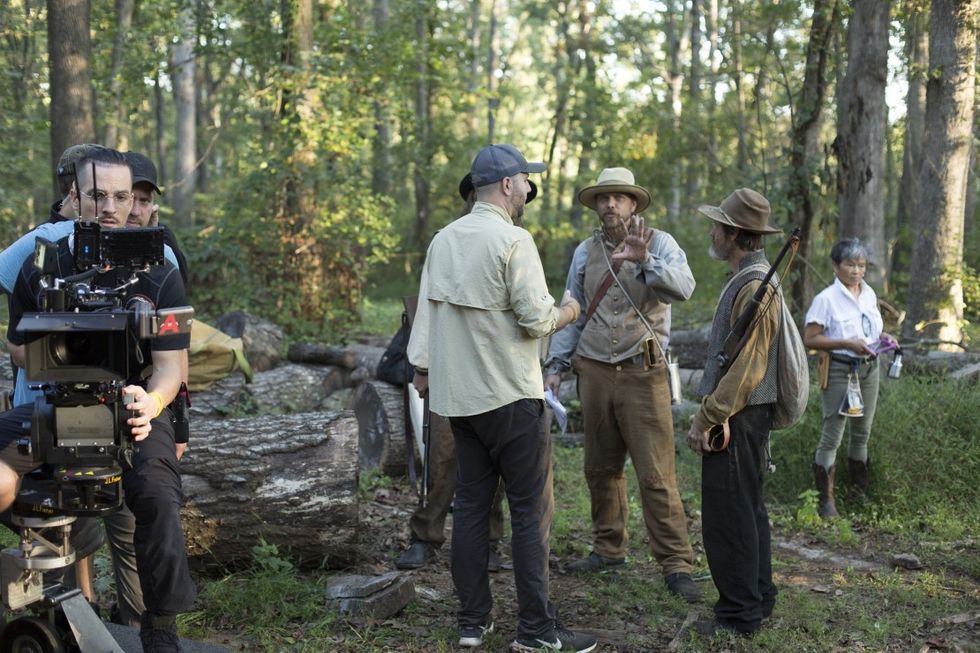
NFS: If a filmmaker is interested in making a western with INSP Films, what should they know about what you’re looking for? From a programming standpoint, what is your criteria for films that you greenlight?
Butts: Your question is valid because there needs to be a little more research being put into whoever it is you're going to pitch to. One of the things that's a little bit frustrating for me is that I need for filmmakers to know who I am [laughs].
I'm looking for movies that have that feeling we call "wholesome with an edge." We want a rugged feel, but we want movies that, when you finish watching them, make you feel good about yourself and your life and give you a nice experience. We don't want heavy, dark, vengeful stories or characters.
INSP Films focuses on the everyday hero—people who are willing to stand up, be courageous, and right the wrongs. You can be an everyday hero, I can be one. If you watch Gunsmoke, you’ll see that none of this is original. But that’s one aspect of storytelling that stands out for us. Our characters are good neighbors, they get involved in their communities… but if you cross them, do something criminal, or act against their family, they are characters who will stand up to you. They'll give you the shirt off their back, but if you prove to be an adversary then they can handle that as well.
And we also want our stories to be action-packed. I've learned more about stunts in the last three or four years than probably anything else.
NFS: Well, one of the advantages of having characters who are "everyday heroes" is that not all of them are going to be doing things that might require elaborate stunts…
Butts: Yeah. Sometimes it's just about standing up to adversity. That’s what creates drama. Look at soap operas. There are no stunts in soap operas, but they’re able to create drama simply through story and characters. You know, you often hear people say, "In soap operas, they say things that I've always wanted to say but never had the guts to say." There's a lot of power in that on the screen.
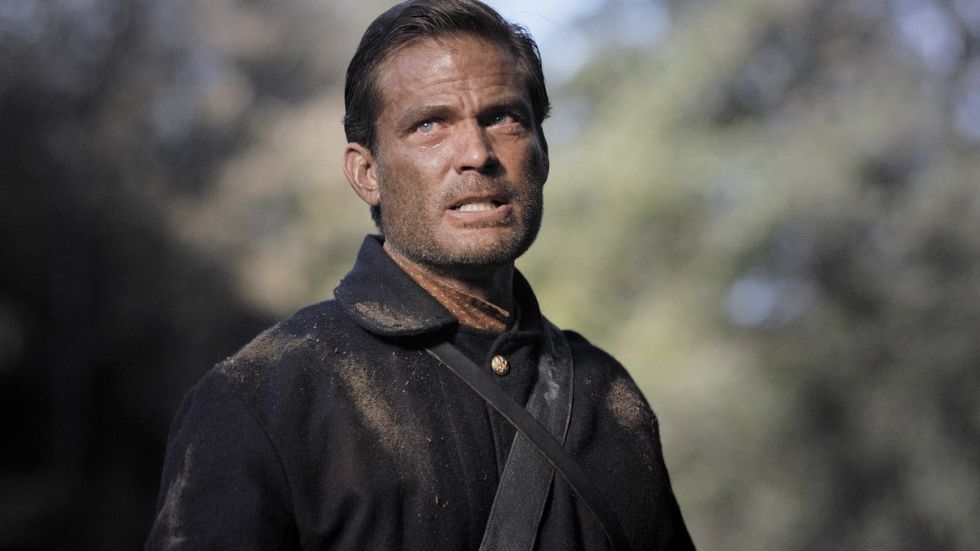
NFS: The western has a rich history in American film and television, and that history is very much rooted in traditionalist ideas and values. But INSP Films is producing new original westerns all the time. How have you and your team responded to the challenge of making and releasing westerns amidst changing times?
Butts: It’s a good question—one that we've talked about quite a bit internally. Like a horror movie, a western has elements that are unique from anything else. Westerns have romance, action, adventure—all of those thrills. A western can be dark and vengeful, but it can also be hopeful with beautiful sunsets. That latter part is what we focus on.
Our network has focused on staying family-centric with the western genre because the theme of family connects with everyone. Everyone has a family and everyone can appreciate what family is about. Some people have a better family history than others and we understand certain viewers' sensitivities to that as well. But we've really focused on, as you've said, the traditional values that you find in the classic westerns that were produced 40 to 50 years ago.
The western is probably not as appealing to younger demographics today as it would be to an older demographic. So, our network actually appeals to an older demographic.
We produce westerns, but we’ve also produced films, like County Line and Legal Action, that we call "western adjacent”—films about, say, small-town crime, set in Anywhere, America. And we’ve found that if we keep both younger and older demographics in mind during our writing and casting process, that gives us much better balance and is much more appealing to a broader audience.
In our first western that we made, The Legend of 5 Mile Cave, we chose to include a flashback that I think worked really well. That was another way of introducing two time periods—telling the story of the west while bringing it to a more modern time. In that case, "modern" was still the 1920s and 1930s, but the film was still able to travel a certain distance. And we told a really good story about families uniting and a couple getting together in the Old West. It's doing really well on Amazon Prime right now.
Finding ways to create westerns nowadays is not as complicated as we kind of thought it would be, because we’re finding that viewers today actually do appreciate the backdrop of the genre. I think they do because westerns are set in a time period that provides some escapism... and because of their wide-open spaces, which are a huge branding element for us.
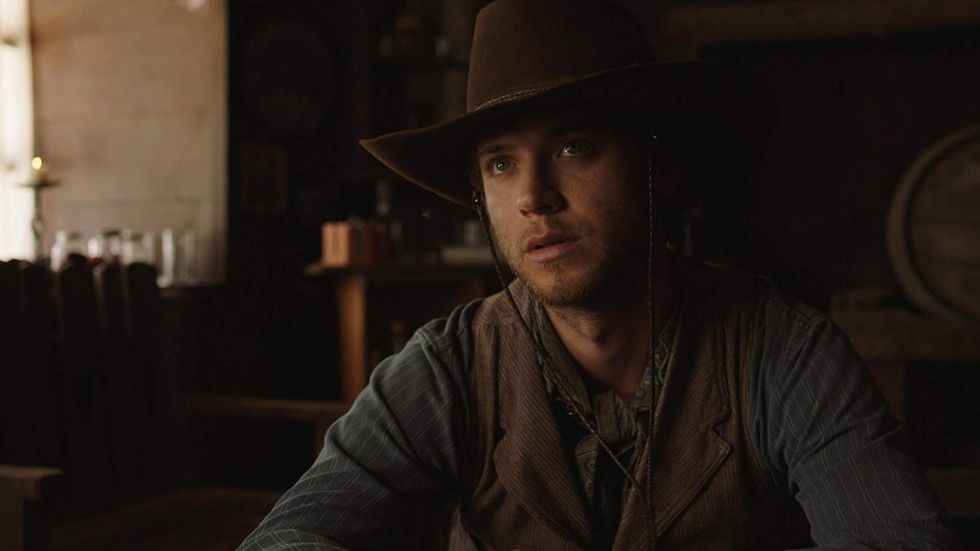
NFS: When it comes to those wide open spaces, are there certain go-to cities and states that your crews use to shoot the network's productions in? And what are some of the benefits those places offer for filmmakers making a western?
Butts: Well, when you’re making films like this, you're only concerned about what's in the camera lens.
We shot The Legend of 5 Mile Cave in old Tucson, where a lot of classic westerns were shot. Gunsmoke was shot there, Charles Bronson shot a lot of his movies there, John Wayne shot a lot of his movies there... I mean, gosh, you name it. That town has a lot of history and we were able to shoot there relatively inexpensively. We also had all these horse wranglers that sort of work for old Tucson available to us. The wranglers doubled as stuntmen for us and we had access to the wagons and horses. So, we were able to gather a lot of resources all in that one place.
The only disadvantage is that, depending on what time of year you shoot in, you may have to deal with some streets being open to tourists while you're shooting on a nearby street. But places like this really do want filmmakers to come there, so they will work with you.
Another thing about shooting in old Tucson is that you have a lot of cacti. The topography is beautiful but also very rough and rugged. If you want that kind of look and feel, it's great.
So, we shot about half of The Legend of 5 Mile Cave in Tucson and we shot the rest of the movie in Toccoa, Georgia. Most of our films thus far have been shot in Toccoa, Georgia and Clayton, Georgia because of the tax incentives.
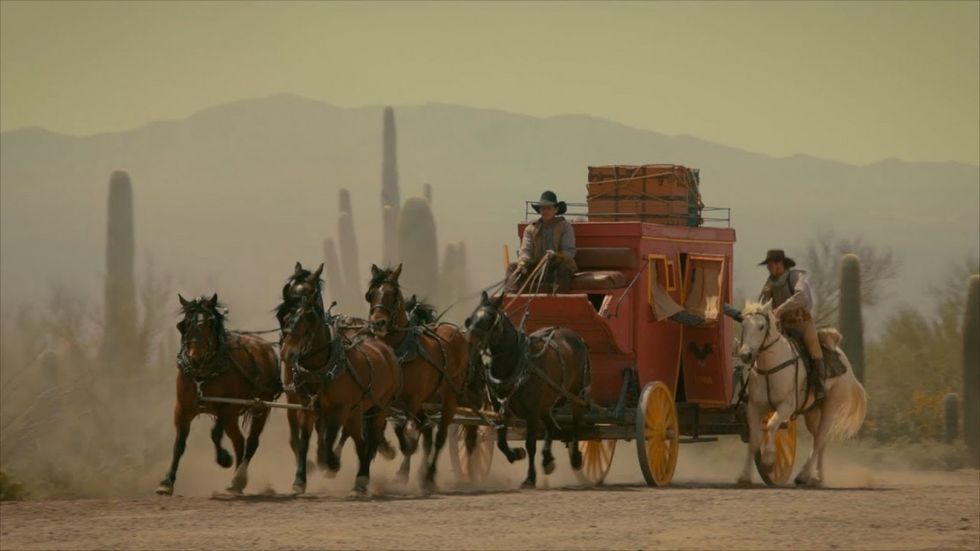
NFS: Right. In Georgia, they incentivize practically everything.
Butts: Yeah [laughs]. We just had two guys go out to scout another beautiful location in Pray, Montana. We're planning to shoot our next film there. If you want rolling hills and wide-open spaces, that's the place to go. But it doesn't have all the bells and whistles like an old Tucson would. That's another advantage of old Tucson: They still have all those posts that you tie your horses to—all those things that you don't even think about until you get out to another location and all of a sudden that stuff's not there, and then you have to bring in your props and so on and so forth.
The tax incentives in Montana are also very good. Arizona's are good, too, but Montana is at 35% right now.
NFS: When you talk about the accessibility of resources and locations in Tucson, what work is involved to ensure that you’re afforded that access?
Butts: As far as permits and that sort of thing, in old Tucson that wasn't an issue. We shot for 10 days out there and we had to pay a fee and sign a couple of documents, but the process was pretty clean. We took some lighting equipment in but they had everything else we needed. There were certain things that we'd have to schedule to shoot with local officials—what streets we'd want to shoot in, what particular buildings or facilities we wanted to use. And they were so cooperative because they really do want more film producers shooting out there.
We were going to shoot there again this year, but with COVID we had to postpone it, and that's when we started looking at Montana and some other locations. The COVID thing has affected all of it.
NFS: Do you and your team still have projects going before cameras now, under the conditions created by the pandemic?
Butts: We are working with SAG on our next project, and I will be honest with you: We've had to change our strategy for this year. They're pretty strict with all the safety protocols.
We've been shooting in Texas and L.A. over the last month or so. We might be able to shoot in Arizona in early fall, but with the COVID numbers looking the way they are in Arizona, there's a chance that we might shoot a film in North Carolina.
We also just completed a film in Canada, so we may go back there with another script that we have ready to shoot. We're kind of in between places, but we are working with SAG to make those decisions right now.
It's possible to shoot in these conditions, but everybody has to be in a bubble. We're doing everything we possibly can to keep it safe and so far, there’ve been no problems.
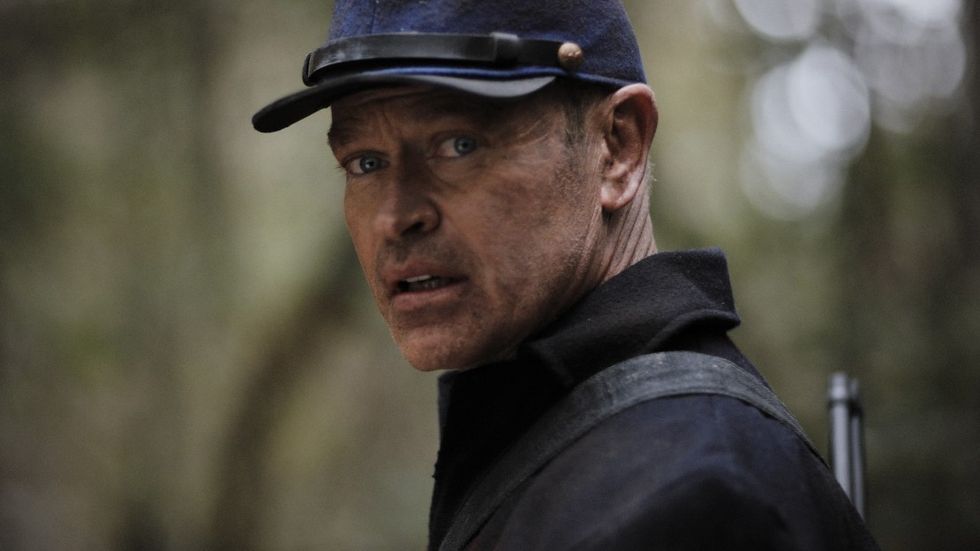
NFS: If a filmmaker is considering whether to work in a "bubble," as you describe, what are the challenges you'd say they might have to anticipate, based on your experience?
Butts: With the COVID-19 structure in place, you have to be ready with all your documentation.
In Canada, we ran into some casting issues, some of them understandable. There are some actors who are more open to working in this environment right now than others. I'm not trying to say anything bad about anyone—it’s just that everybody has different levels of concern. So, we had to cast within a 50-mile radius. We worked with a film production company just north of Toronto that had their own backlot and studios and we were able to find great actors that we’re happy with.
The main challenge is to get your protocol together—to coordinate that with SAG or any of the entities that you're going to be working with. A production company has to be responsible and the liability issue comes up. You have to work through your risk management issues. Nothing was impossible, it all just took a little extra time. That would be my main comment: Be ready for a little extended window of preparation.
Everyone has to be willing to do things a little bit differently. We told our crew, "You can't go out. You can't party. You've gotta stay in the bubble." When you create a bubble, you have to allow for testing time, because with SAG it's going to be three times a week for your cast, and in some cases, a couple of times a week for the crew.
If someone tests positive for the virus, it doesn't necessarily mean that you're shut down. It just depends on who it was. You've just got to take that case by case. We haven't had anyone come down with it, but I talked to a producer last week and he was sharing with me that he did have a crewmember that was positive. But it didn't shut down the whole production, so it was good to know that. There is risk involved. If your lead or one of your leads comes down with it, that could shut you down. You've just got to count the costs and measure those risks as much as you can.
We've done three productions now, and so far, it's amazing how the crew is excited to get back to work. They're motivated to do the right thing and go by the protocol. They may be a little extra sensitive about interactions, so a lot of creativity has to go into who approaches the set at what time. You have to make sure that the cast is protected and that social distancing is in place. But during the three productions we've done thus far, everything's gone pretty smoothly.
NFS: That’s great. I imagine that some of these challenges are actually not much different from what a filmmaker might face when it comes to the extreme volatility and unpredictability of a set in general. So, this is just a new set of circumstances to adapt to.
Butts: Yeah. You know, we've been in situations before COVID where an actor just doesn't want to do something! And they'll suddenly go back to their trailer. So, you’re right—the unpredictability of these new challenges are kind of similar to that in some ways [laughs].











